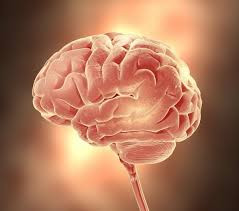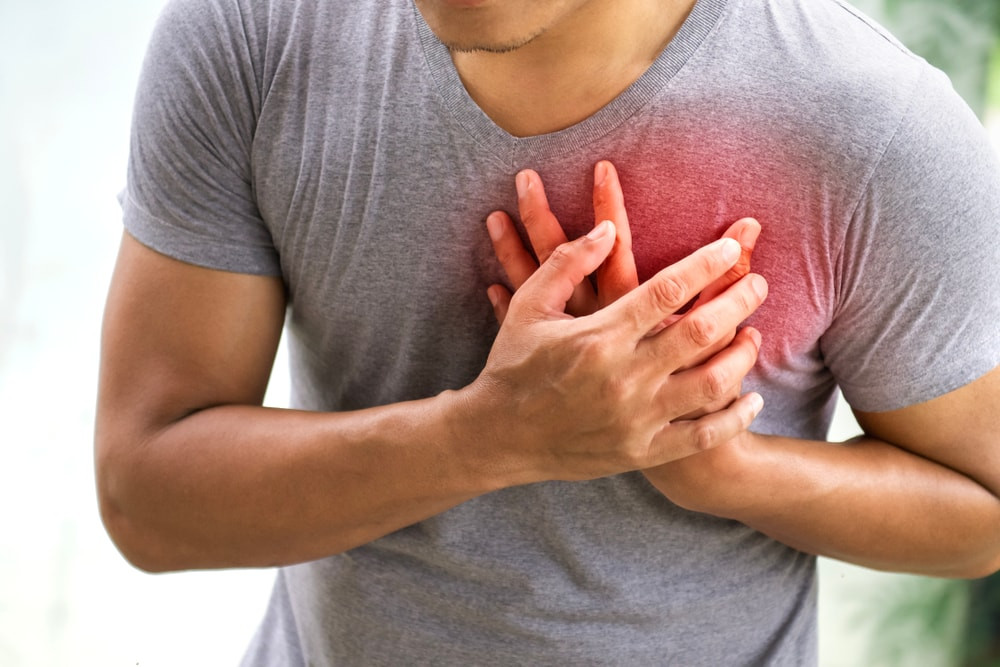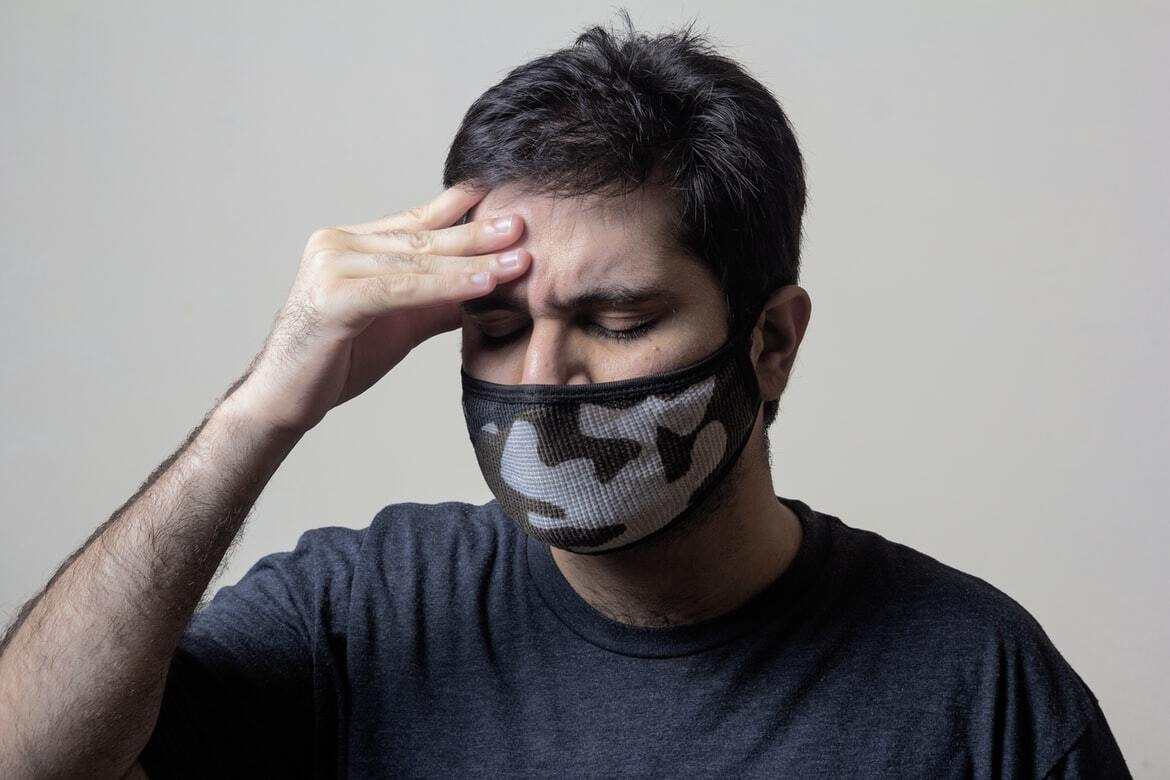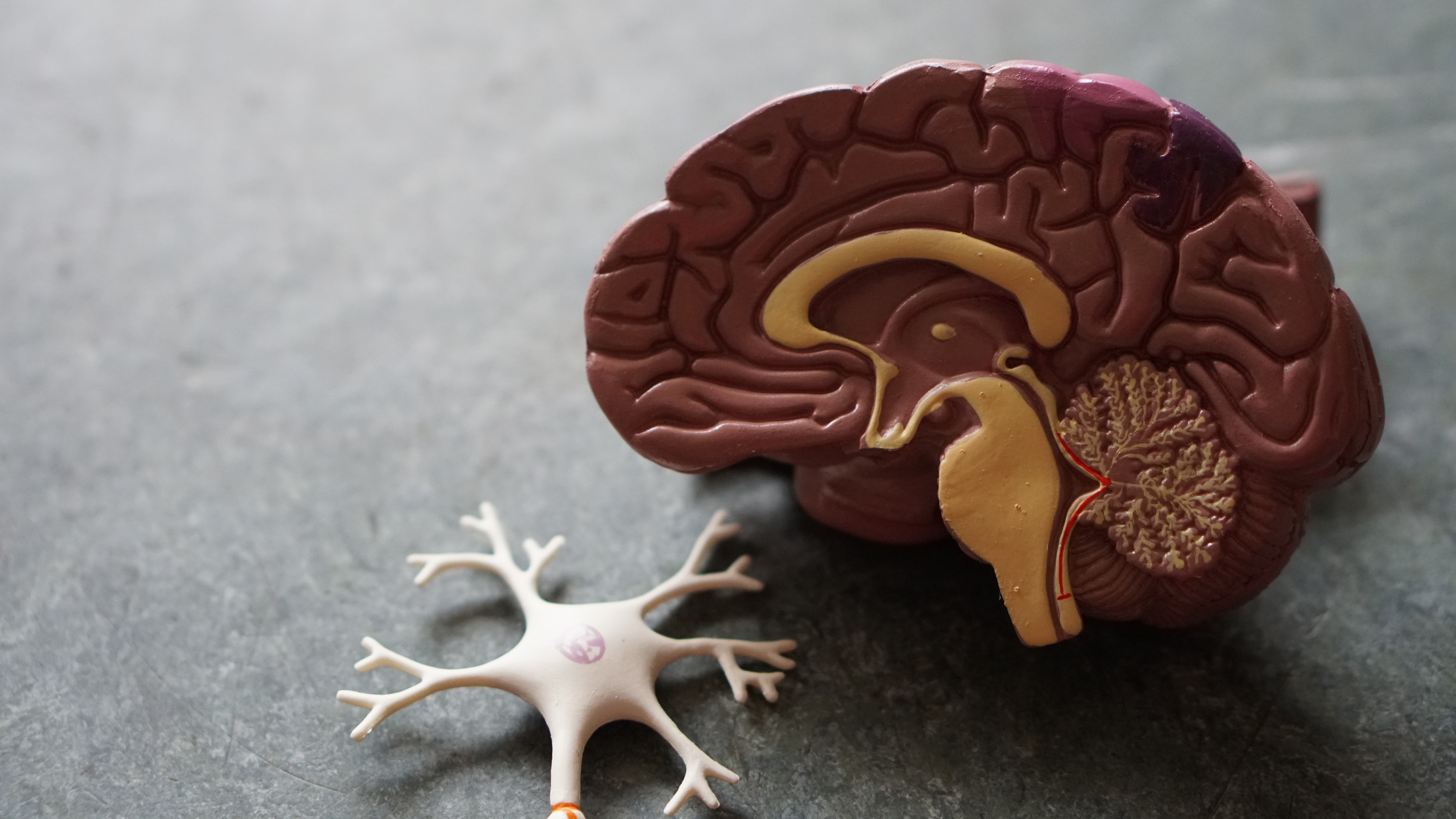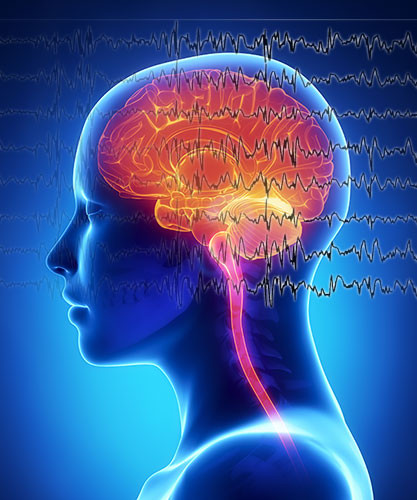Definisi
Stroke adalah kondisi di mana pembuluh darah di otak tersumbat atau pecah. Otak kita membutuhkan persediaan aliran darah yang kaya akan oksigen sehingga dapat berfungsi dengan baik. Ketika jaringan otak tidak mendapat asupan oksigen lebih dari tiga menit, maka sel-sel otak mulai mati dan bisa tidak berfungsi. Stroke dapat terbagi menjadi beberapa jenis seperti yang dijelaskan di bawah ini.
Stroke Hemoragik
Stroke hemoragik adalah kondisi ketika pembuluh darah di otak melemah sehingga pecah dan menyebabkan perdarahan dari pembuluh yang terjadi secara tiba-tiba. Darah yang keluar dari pembuluh darah yang pecah juga dapat merusak jaringan di sekitar otak. Stroke hemoragik adalah jenis stroke yang paling serius. Sekitar 13% dari kasus stroke adalah kasus stroke hemoragik.
Hemoragik dalam bahasa medis berarti perdarahan. Ada dua jenis dari stroke hemoragik, yaitu:
- Perdarahan intraserebral, yaitu stroke yang terjadi karena pecahnya pembuluh darah di bagian dalam otak.
- Perdarahan subarakhnoid, yaitu stroke yang timbul ketika ada pelebaran pembuluh darah di jaringan sekitar otak yang kemudian pecah. Darahnya kemudian masuk ke dalam ruang antara otak dan tengkorak kepala. Umumnya disebabkan oleh tekanan darah tinggi pada pembuluh darah otak.
Stroke Iskemik
Stroke iskemik terjadi ketika ada sumbatan pada pembuluh darah dan menghentikan aliran darah ke otak. Hal ini membuat suplai oksigen ke otak ikut berhenti dan menimbulkan terhentinya kerja otak. Sumbatan ini umumnya diakibatkan oleh gumpalan darah atau plak lemak. Sekitar 87% dari kasus stroke adalah kasus stroke iskemik.
Transient Ischemic Attack (TIA)
TIA juga dikenal dengan mini stroke. TIA memiliki gejala yang sama dengan stroke, namun umumnya aliran darah ke otak hanya tersumbat selama tidak lebih dari lima menit. Tidak seperti stroke, TIA tidak membunuh sel-sel otak, jadi tidak ada kerusakan yang berlangsung lama pada otak. Namun begitu, TIA juga dipertimbangkan sebagai tanda bahaya dan gejala serius dari stroke.
Sekitar sepertiga orang yang mengalami TIA dan tidak mendapat pengobatan ditemukan mengalami stroke dalam setahun. Selain itu, sekitar 10-15% individu yang pernah mengalami TIA juga bisa mengalami stroke dalam 3 bulan.
Penyebab
Penyebab dari stroke tergantung pada jenis strokenya. Tekanan darah tinggi yang tidak terkontrol bisa menyebabkan pembuluh darah di otak pecah dan menyimbulkan stroke hemoragik. Hal lain yang bisa menyebabkan stroke hemoragik adalah cedera kepala.
Adanya sumbatan pada pembuluh darah di otak seperti plak lemak atau gumpalan darah bisa menghambat pengantaran suplai oksigen menuju ke sel otak. Hal ini bisa menyebabkan stroke iskemik. Sumbatan ini bisa berawal dari tempat lain seperti jantung, yang bisa berjalan melalui pembuluh darah dan sampai di otak.
Faktor Risiko
Walaupun stroke lebih sering terjadi pada usia lanjut, stroke dapat terjadi pada usia berapapun. Dengan memahami faktor risiko dari stroke dan mengenali gejalanya, pengetahuan ini dapat membantu Anda untuk mencegah terjadinya stroke. Faktor risiko dari stroke antara lain adalah:
- Usia di atas 55 tahun.
- Jenis kelamin perempuan.
- Kebiasaan merokok.
- Tekanan darah tinggi.
- Pernah mengalami stroke atau mini stroke sebelumnya.
- Memiliki riwayat stroke pada keluarga.
- Menderita diabetes melitus atau penyakit jantung.
- Memiliki kolesterol yang tinggi.
- Gaya hidup sedenter dan tidak aktif.
- Konsumsi alkohol berlebihan.
- Obesitas.
- Kehamilan.
Gejala
Gejala dari stroke bervariasi dari keparahan dan seberapa cepat stroke dideteksi. Tanda bahaya dan gejalanya meliputi:
- Kepala pusing, mual, atau muntah.
- Penurunan kesadaran.
- Nyeri kepala yang sangat hebat.
- Disorientasi, kebingungan, hilang ingatan.
- Mati rasa, kesemutan, dan kelemahan anggota gerak atau wajah pada satu sisi.
- Gangguan bicara atau bicara pelo.
- Terdapat kesulitan memahami pembicaraan orang lain.
- Penurunan kemampuan penglihatan.
- Penurunan kemampuan keseimbangan, koordinasi, dan kemampuan berjalan.
Diagnosis
Dalam mendiagnosis stroke, dokter memerlukan pemeriksaan berupa sesi tanya jawab, pemeriksaan fisik, dan pemeriksaan penunjang.
Wawancara Medis
Umumnya bila pasien masih sadar dan memungkinkan untuk melakukan sesi tanya jawab, dokter akan bertanya mengenai:
- Keluhan utama pasien dan keluhan penyerta bila ada.
- Sudah berapa lama keluhan tersebut muncul.
- Riwayat penyakit sebelumnya.
- Riwayat penyakit di keluarga.
- Riwayat pengobatan pada pasien.
Pemeriksaan Fisik
Kemudian, dokter akan melakukan pemeriksaan fisik. Pemeriksaan fisik meliputi:
- Pemeriksaan awal berupa keadaan umum pasien seperti tingkat kesadaran pasien, tekanan darah, laju napas, nadi, dan suhu tubuh.
- Pemeriksaan saraf yang lebih spesifik pada wajah dan anggota gerak pasien, untuk mengecek apakah ada kelemahan anggota gerak serta gangguan keseimbangan.
- Pemeriksaan rangsang untuk memeriksa apakah fungsi sensorik dalam menerima rangsangan masih dalam keadaan baik atau tidak.
Pemeriksaan Penunjang
Pemeriksaan penunjang yang dapat dilakukan adalah sebagai berikut:
- CT Scan: CT Scan merupakan pemeriksaan radiologi untuk melihat adanya sumbatan dan jenis stroke yang dialami pasien. Ini merupakan baku standar dalam mendiagnosis stroke.
- MRI Scan: MRI merupakan metode pemeriksaan pada stroke yang lebih canggih dan mampu melihat sumbatan lama atau baru, sayangnya pemeriksaan ini hanya tersedia di fasilitas kesehatan tertentu.
- Pemeriksaan laboratorium darah lengkap: Untuk melihat adanya penyakit lain yang turut serta atau mendasari terjadinya gejala pasien.
- Elektrokardiogram: Pemeriksaan rekam jantung atau EKG dapat dilakukan untuk melihat adanya gangguan irama dan sumbatan pada pembuluh darah jantung pasien, terutama bila pasien dicurigai menderita stroke iskemik.
- Ultrasonografi Doppler: USG Doppler dapat dilakukan pada pasien dengan gejala yang menunjukan adanya sumbatan pada arteri otak bagian tengah atau depan.
Tata Laksana
Tata laksana stroke bertujuan untuk segera mengembalikan hantaran oksigen dan aliran darah pada pembuluh darah otak. Diharapkan fungsi otak bisa kembali seperti semula. Terapi yang diberikan umumnya bergantung pada jenis stroke dan seberapa parah gejalanya. Pilihan pengobata juga tergantung dengan kondisi pasien, sehingga pasien umumnya diobservasi di bawah pengawasan dokter spesialis saraf. Berikut merupakan tata laksana yang dapat dilakukan dalam mengobati stroke.
Stroke Hemoragik
Pada pasien dengan stroke hemoragik, pengobatan akan berfokus untuk mengurangi tekanan darah yang tinggi, mengontrol perdarahan dan mencegah kerusakan otak agar tidak meluas. Tekanan darah akan diturunkan secara bertahap dengan antihipertensi serta faktor pembekuan darah bila perlu guna menurunkan tekanan darah dan mencegah kejang. Pasien juga akan mendapat cairan untuk mengganti cairan yang hilang akibat perdarahan. Selain dengan obat, dokter juga dapat melakukan tindakan operasi untuk mengurangi tekanan dalam otak.
Stroke Iskemik
Pengobatan terfokus untuk menyelamatkan jaringan otak yang kekurangan darah akibat sumbatan. Dokter bisa memberikan obat antikoagulan atau serta rTPA (recombinant tissue plasminogen activator) sebagai terapi pengencer darah. Terapi ini bertujuan untuk menghancurkan gumpalan darah yang menyumbat pembuluh darah otak. Pasien dengan kolesterol tinggi juga bisa mendapat obat golongan statin agar kadar kolesterol di tubuhnya bisa turun.
TIA
Untuk TIA, pada beberapa kasus dalam sembuh sendiri dalam 24 jam. Namun begitu, Anda perlu melakukan pemeriksaan untuk mengendalikan faktor risiko penyakit yang dimiliki. Diharapkan munculnya stroke di kemudian hari bisa dicegah.
Selain itu sebagai tambahan, biasanya dokter akan menyarankan untuk dilakukan fisioterapi dan pelatihan rehabilitasi medik. Terapi ini bertujuan untuk membantu pasien melatih dan mengembalikan fungsi tubuh serta kekuatan otot yang hilang selama pasien terkena stroke.
Komplikasi
Komplikasi dari stroke dapat berupa:
- Gangguan tidur
- Depresi.
- Inkontinensia urine (gangguan yang membuat individu tidak bisa mengontrol kandung kemih).
- Gangguan menelan.
- Infeksi paru.
- Malnutrisi.
- Infeksi saluran kemih.
- Penurunan massa otot.
- Ulkus dekubitus (luka pada kulit akibat tekanan karena posisi tubuh yang lemah dan tidak berganti dalam waktu lama).
Pencegahan
Penyakit stroke dapat dicegah ketika kita mengetahui faktor risikonya dan dengan melakukan beberapa hal berikut, seperti:
- Mengontrol tekanan darah agar dalam rentang normal.
- Melakukan olahraga ringan sebanyak 5 kali seminggu minimal 30 menit setiap sesi.
- Berhenti merokok dan menghindari paparan asap rokok.
- Menghindari konsumsi alkohol.
- Mengontrol kadar kolesterol.
- Makan makanan gizi seimbang dengan memperbanyak buah dan sayur serta mengurangi garam.
- Mempertahankan berat badan dalam rentang ideal.
- Mengontrol kadar gula darah.
- Membaca edukasi dan literatur mengenai stroke untuk orang awam.
Kapan Harus ke Dokter?
Seseorang harus segera dibawa ke fasilitas gawat darurat bila mengalami penurunan kesadaran, kesulitan berbicara dan kelemahan anggota gerak. Pengobatan stroke bergantung pada seberapa lama gejala sudah muncul. Semakin cepat terdiagnosis, pengobatan stroke dapat memberikan hasil yang lebih baik.
Mau tahu informasi seputar penyakit lainnya? Cek di sini, ya!
- dr Hanifa Rahma
Centers for Disease Control and Prevention (CDC) - Stroke (2022). Retrieved 22 August 2022, from https://www.cdc.gov/stroke/index.htm
Cleveland Clinic - Overview of Stroke (2018). Retrieved 22 August 2022, from https://my.clevelandclinic.org/health/diseases/5601-stroke-understanding-stroke#symptoms-and-causes
Mayo Clinic - Stroke (2022). Retrieved 22 August 2022, from https://www.mayoclinic.org/diseases-conditions/stroke/diagnosis-treatment/drc-20350119
WebMD - Heart Disease and Stroke (2021). Retrieved 22 August 2022, from https://www.webmd.com/heart-disease/stroke


